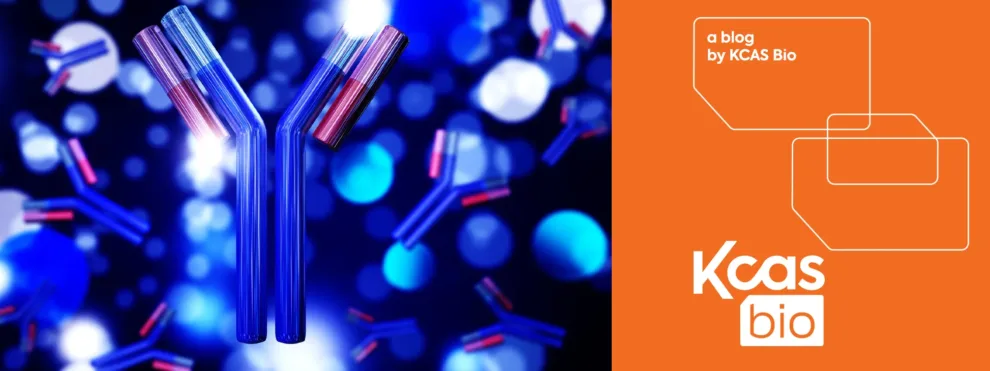Immunogenicity, why do we keep talking about it? Immunogenicity can, in the simplest of terms, be described as a subject’s ability to generate antibodies specific to the dosed protein therapeutic. While stating it this way understates the complexity of the immune system and the methods needed to detect and characterize the anti-drug antibody (ADA) response, it is, at the core, the question being asked.
Frequently, the ADA or immunogenicity assay development is secondary, as the primary focus of a project is to understand the absorption, distribution, metabolism, and excretion (ADME) of a dosed therapeutic which is evaluated in Pharmacokinetics. Additionally, understanding the pharmacodynamics of the drug allows investigators to make critical decisions regarding go/no-go checkpoints early in a drug development program. While these assays are important and provide great value to a development program, the ADA assay and the information gleaned from that analysis are equally important in the safety assessment and efficacy in developing a comprehensive view of the drug/subject interaction.
The reasons immunogenicity is needed and how it can impact a drug development program differ depending on where a drug candidate is in its life cycle. The first instance where ADA may be needed is in the so-called “pivotal tox studies”. These are the rodent and non-human primate studies that are performed following the FDA 21CFR part 58 (GLP) guidelines. While the animals are being dosed with a human protein, and the emergence of ADA is not predictive of what will happen in humans, the effect ADA has on the PK parameters can be useful both in understanding the effect of an ADA response as well as providing an explanation for aberrant exposures or elimination profiles. It is at this point (even if no non-clinical ADA assay is developed) that one should begin activities to enable method development for clinical studies.
After preclinical studies are complete, an IND filing is submitted to the FDA in order to obtain approval to start clinical trials. Once an IND is filed and there are plans to dose humans, the need for an ADA becomes paramount. Prior to filing the IND (at least 3 months prior) a surrogate antibody or positive control generation program should have been started. The information that is obtained from the assessment of samples for ADA will help inform not only the PK, but the safety profile of the drug and determine if an antibody response is persistent (does not decrease once identified) or transient (can be dosed through without long-term adverse effects to drug exposure). Additional evaluations are done to further inform the teams regarding the safety profile of therapeutic. These evaluations determine the relative abundance of the ADA so a correlation can potentially be drawn to safety events and ADA prevalence, where on the protein (if a fusion protein) the ADA is binding if the ADA is neutralizing and preventing the drug from binding the intended target or having the intended impact. In 2019, the FDA set forth guidance for the industry on ADA assay development and validation. The guidance provides recommendations for the development and validation of assays used to detect ADAs during clinical trials. This guidance covers various types of ADA assays including screening, confirmatory, titration, and neutralization assays as well as discusses the parameters evaluated in these methods
KCAS Bio is a CRO that not only understands how to develop an ADA assay for your unique protein therapeutic but can assist you in the development of an immunogenicity testing strategy starting at the non-clinical through late clinical phases. Some of the services we offer regarding immunogenicity are method development and validation, including a statistically robust method for determining a cut point for your assay that exceeds FDA expectations, resolving endogenous interferences, improving drug tolerance challenges, etc. When your program is approaching the critical phase of development, we will ensure you have the best assays to enable the success of your therapeutic protein program.

